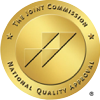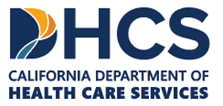Facts About Bipolar Disorder & Recovery: Transforming Lives
- Home
- Blog
- Bipolar Disorder
- Facts About Bipolar Disorder & Recovery: Transforming Lives
Mental health crises are prevailing higher each year, and these numbers are trending upward. 1 in every 8 people in the world suffers from a mental disorder. One in five children deal with a serious mental health disorder at some point in life. One in 25 Americans are currently enduring serious mental health disorders, including depression, bipolar disorder, or schizophrenia.
If we dive into numbers and proportions, Bipolar Disorder Statistics boast around 2.8% of the U.S., which translates to 5.7 million adults. The lifetime prevalence of bipolar disorder is 2.4%, and higher with Bipolar type I, which involves more severe manic episodes.
The figures are not to shock or scare; they are to define that it’s time to break stereotypes and get help. There is no shame or stigma associated with this, but getting help and treatment is a necessity. WHO does not distinguish physical health from mental health; instead, it considers health and well-being as a whole. Both aspects play an important role in attaining this.
Emotion, cognition, and behavior are relevant spheres to mental health, but someone experiencing a change in these intrinsic and instrumental aspects causes distress, and their functioning is impaired.
Bipolar Disorder is knitted with a lot of myths. Unfortunately, this invites more stigmas and limits the support, understanding, and treatment they receive. Let’s bust some myths and underscore facts about Bipolar Disorder that help in interpreting the disease and figuring out the best possible treatment.
Some Intriguing Facts about Bipolar Disease that Redefine Perception
Bipolar Disorder is identical in two people, and it manifests differently. Some undergo manic highs while others depress lows. Not everyone is boxed with the same patterns or symptoms.
1. It is Beyond Unusual Shift in Energy and Mood Swings
Bipolar extends far beyond conventional mood swings and disorders. It is messier and unpredictable beyond just manic depression. People undergo erratic shifts between highs and lows, which can be unpredictable, simultaneous, or rapidly alternate.
The hallmark signs of bipolar disorder are not limited to extreme mood swings, sadness, or hopelessness; the mixed experiences can manifest as a whirlwind of agitation, impulsive behavior, and experiencing a depressive stage. These behaviors are recurring, and there is no defined definition that explains how and when they occur.
Learning the art of managing these highs and lows and controlling them with therapies is a well-rounded treatment for Bipolar disease.
2. the Spectrum of Bipolar Disorder Manifests in Kids, Too
Yes, About 4% of children under the age of 18 experience Bipolar Disorder. Children aren’t immune. Often, children are labeled as mixed bags of emotions, from tantrums to exhibiting extreme highs, but this isn’t just the thing. Bipolar disorder pushes them to undergo irritability, destructive outbursts during manic episodes, depressive episodes, and much more. However, there are no tried and tested methods that we could drill down to know the exact cause, but it highly emphasizes that it could be a genetic component. Additionally, trauma and stressful events are contributors to the risk of developing bipolar disorder.
However, one Interesting fact about Bipolar disease is that it’s different in children compared to adults. Consulting a doctor or mental health professional can help you chalk out the best treatment and get help.
3. Manic and Depressive Episodes can put you in danger
It’s quite difficult to deal with the turmoil of extreme highs or depressive lows. You would be surprised to know that people during their highs behave extremely recklessly and make dangerous choices. The fun feeling is backed with symptoms of psychosis and delusions, hallucinations, and people who don’t have control over their bodies or might even be paranoid about people around them. It’s not uncommon for people to express deep depression, extreme mood swings, and suicidal thoughts.
4. Is it Okay to Seek For Evaluation
Mental disorders are in rage. With similar symptoms and behavioral issues, a person might be skeptical if they are a victim of bipolar disorder or not. It’s important to see a medical professional who helps you magnify the issues and underline the bipolar or phases of bipolar disorder.
Bipolar is not a crime; it’s a disease, a disorder that needs to be cured and healed. It’s not a result of a lack of power or inability to manage emotions. The early intervention would help you diagnose the disease. Most people are misdiagnosed with depression, ADHS, schizophrenia, or others. A free and confidential assessment at Cast Treatment Centers helps you find a way to solve your dilemmas.
5. Cultivating Positivity Through Therapies and Treatment Rebuilds a Healthy Life
Breaking the stigma and being optimistic about treatment fosters a positive outlook and improves emotional well-being. Taking medications and supporting your loved one in therapies acts as a preventive approach and helps them avoid future manic or depressive episodes.
The universal and interesting fact about bipolar disorder is that medications and therapies
are the first line of treatment for bipolar disorder. Conjugated with psychological therapies, cognitive behavioral therapies, family-focused therapy, and interpersonal therapies diminished the symptoms and improved the odds of treatment.
However, there is no perfect treatment plan that fits all. Medication, talk therapy, and lifestyle changes may be the best course, but they can intensify or alter according to the comorbid condition and complexity of the disorder. Unlike diabetes, getting the right treatment and consulting with a physician is the best way to figure out and address the issue.
Connecting with experienced therapists
Facts and Figures of Bipolar Disease equate that it’s something out of your control. The median age onset of bipolar disorder is about 25 years, and it’s common among aged 13 to 18. Statistics of Bipolar Disorder state that men and women undergo the same rate of bipolar disease – 2.9% and 2.8%, respectively.
Although the symptoms could be from mild to severe. There are several mental and physical health concerns accompanied by bipolar disorder, and one of them is substance abuse.
If you know someone who experiences symptoms of bipolar disorder or manic depression, contact Cast Treatment Centers to discuss available treatment options. A qualified mental health professional or psychiatrist would deplete your complications and guide you towards a healthier path.
GET STARTED TODAY!
424-302-2598
CAST Treatment Centers is Proud to Celebrate Over 18 Years
Helping Individuals & Families
Programs
What We Treat
-
Substance Abuse
Insurance
Alumni
Contact Cast Treatment Centers
CAST Treatment Centers
630 N Doheny Drive
West Hollywood, CA 90069
424-302-2598
Email
Administration
632 N Doheny Drive
West Hollywood, CA 90069
424-302-2598
Email
Service Area
CAST Treatment Centers is licensed by the California State Department of Health Care Services. DHCS Certification for Intensive Outpatient and Outpatient Services.
License Number: 190936BP.
Expiration Date: 8/31/2025.
Copyright © 2022 CAST Treatment Centers. All rights reserved.
Privacy Policy | HIPAA | Terms of Use | Site Map


